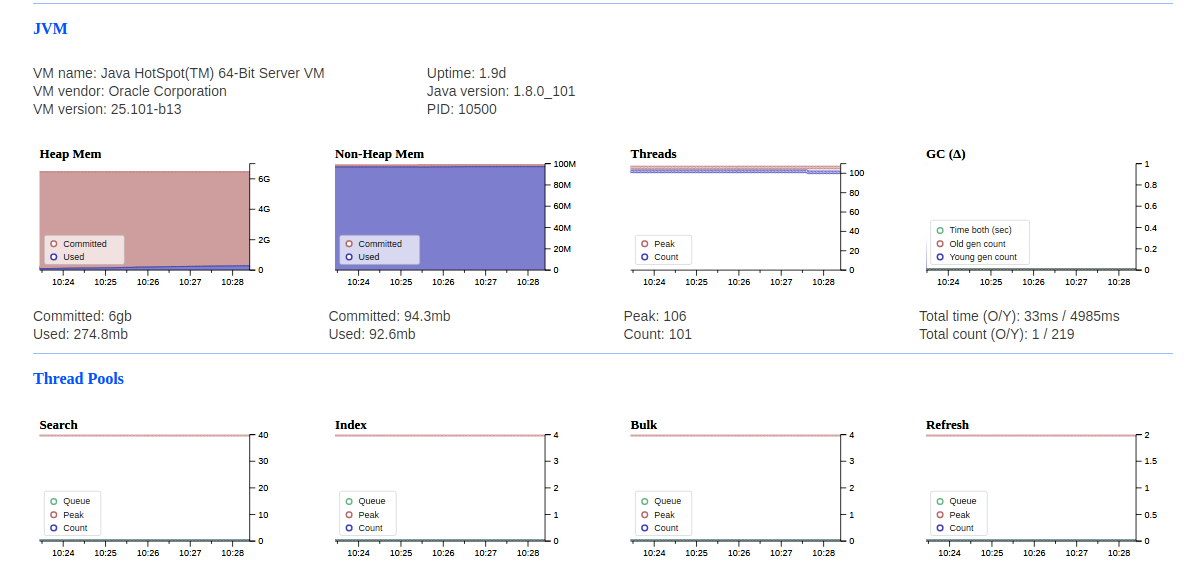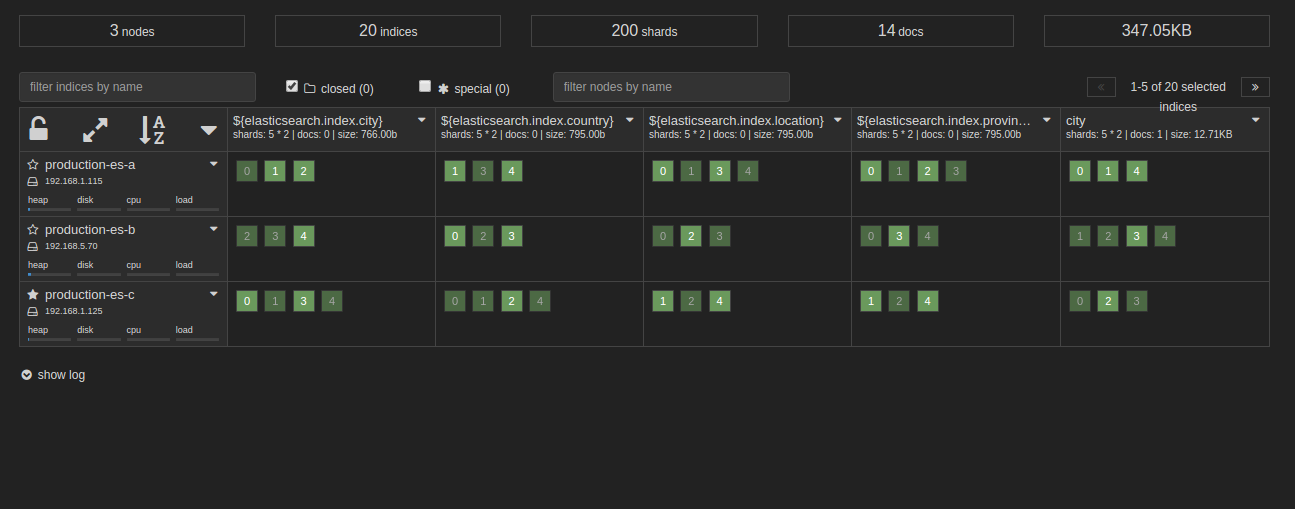Elasticsearch Plugins for Monitoring and Management of Cluster Nodes
Elasticsearch offers highly useful plugin mechanism as a standard way for extending its core functionality such as custom analyzer, native scripts and more. While some plugins may contain static content which is served through its HTTP server, some others offer a graphical front-end for selected parts of the Elasticsearch REST API such as monitoring, managing cluster and index state, or querying.
Some of the plugins that we use in our production environment include:
1) Bigdesk
The Bigdesk plugin displays graphs ranging from OS metrics to Elasticsearch thread pool and cache sizes for each node.
Key Features:
Provides information about each node such as:
- Global info about indices, field and filter caches
- JVM details
- OS details
Provides information about the charts such as:
- Size of Field and Filter Caches
- File Descriptors and Open Channels
- JVM threads
- JVM Heap and non-heap memory
- OS CPU, Memory and Swap
Moreover, user can switch between the two nodes in the cluster. The new nodes are added and old nodes are removed automatically on the fly.
Installation :
1) Go to elastic search home directory: Generally ES_HOME is/usr/share/elasticsearch
[js]cd /usr/share/elasticsearch[/js]
2) Navigate to the node installation folder and run the following command:
[js]./bin/plugin -install lukas-vlcek/bigdesk[/js]
3) To install a specific version (for example 2.4.0) run
[js]./bin/plugin -install lukas-vlcek/bigdesk/2.4.0 [/js]
4) Moving forward, navigate your web browser using the link below http://<elasticsearch_REST_endpoint>/_plugin/bigdesk/
Navigate with the link below in case of localhost:
http://localhost:9200/_plugin/bigdesk


These are the set of graphs that Bigdesk offers for each node in the cluster.
2) Kopf
Kopf is a web administration tool for Elasticsearch written in JavaScript, AngularJS, jQuery, and Twitter bootstrap. Apparently, it was inspired by a German word (Kopf means head in German). It offers various filters for the large clusters such as Nodes by name and type (client, data, master-eligible), indexes by name and state, hide special indexes created internally by Elasticsearch.
Key Features:
- Quickly find an index.
- View index information
- Issue administrative commands through rest client
- Administer the Elasticsearch snapshot/restore functionality

Installation :
1) Go to elastic search home directory: Generally, ES_HOME is /usr/share/elasticsearch
[js]cd /usr/share/elasticsearch[/js]
2) Navigate to the node installation folder and run the following command:
[js]./bin/plugin install immenezes/elasticsearch-kopf[/js]
3) Moving forward, navigate your web browser using the link below http://<elasticsearch_REST_endpoint>/_plugin/kopf/
Navigate through the link below in the case of local host:
http://localhost:9200/_plugin/kopf
Hope this blog will give you detailed insights about Elasticsearch cluster. Please keep following my blog for more updates on other Elasticsearch plugins.



